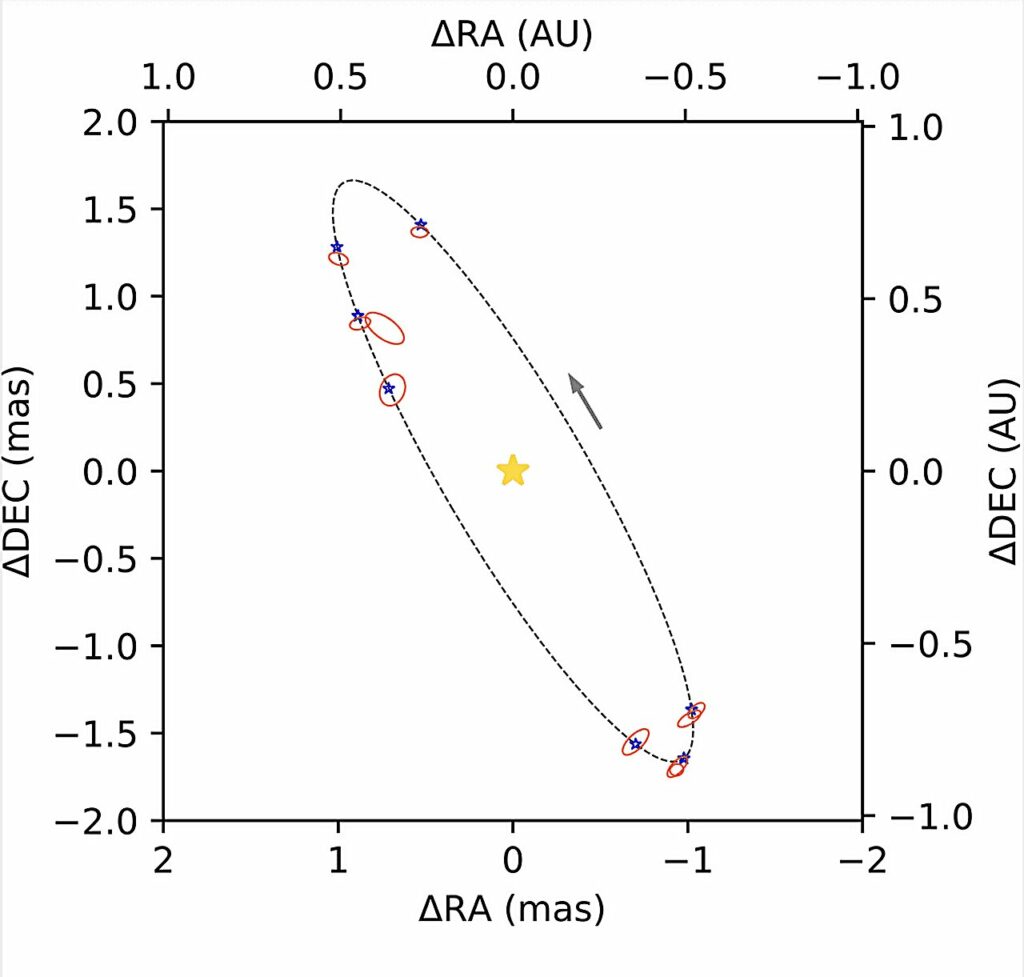Mastering the Method of Locating Cannibalized Stars
A survey conducted by scientists at Georgia State’s Center for High Angular Resolution Astronomy (CHARA) Array using powerful telescopes has revealed that a group of stars has likely consumed most of the gas from their orbiting companion stars. Through sensitive measurements, these scientists have directly observed the faint glow emitted by the cannibalized stars.
The findings of this research, led by Postdoctoral Research Associate Robert Klement, have been published in The Astrophysical Journal. This study has identified new orbits of stripped subdwarf stars that revolve around rapidly spinning massive stars, providing a deeper understanding of the life trajectory of close binary stars.
Collaborating with colleagues at the CHARA Array in Mount Wilson, Calif., Klement directed the high-powered telescopes towards a cluster of nearby B-emission line stars, commonly referred to as “Be stars”. These stars are known for their rapid rotation and are believed to have peculiar orbiting companions.
It is hypothesized that Be stars are formed through intense interactions between closely paired stars. Astronomers have observed that many stars exist in such pairs, particularly among those that are more massive than our sun. Pairs with small separations face a turbulent fate as they expand in size over time, eventually reaching a dimension similar to their separation.
During this process, gas from the expanding star can bridge the gap between the pair, allowing the companion star to consume the transferred gas stream. This cannibalization process gradually depletes the mass donor star of its gas, leaving behind only the small, hot core of its former nuclear-burning center.

Astronomers have long predicted that the transfer of mass between stars would cause the companion star to spin rapidly, resulting in what are known as Be stars. These Be stars rotate so quickly that some of their gas is expelled from their equatorial regions, forming a ring of gas that orbits around them.
However, until recently, this stage in the life of close binary pairs has remained elusive to astronomers. The small separations between these stars and the intense brightness of their companions have made it difficult to observe them using conventional telescopes. Fortunately, the CHARA Array telescopes at Georgia State University provided a solution to this problem.
The CHARA Array consists of six telescopes strategically positioned on Mount Wilson, effectively functioning as a single telescope with a diameter of 330 meters. This setup allows astronomers to separate the light emitted by pairs of stars, even when they are very close together. To further enhance their observations, the researchers utilized the MIRC-X and MYSTIC cameras, developed at the University of Michigan and Exeter University, respectively. These cameras are capable of capturing the light signals emitted by both bright and faint objects in close proximity.
The primary objective of the researchers was to determine whether the Be stars had indeed been spun up by mass transfer and if they hosted stripped companion stars in orbit around them. To achieve this, Klement initiated a two-year observing program at CHARA, which yielded promising results. He successfully detected the faint light emitted by stripped companions in nine out of the 37 Be stars studied. Among these, he focused on seven targets and was able to track the orbital motion of the stellar corpses around the Be stars.
“The determination of these orbits is crucial as it allows us to calculate the masses of these stellar pairs,” explained Klement. “Our mass measurements indicate that the stripped stars have lost a significant portion of their mass. For instance, in the case of the star HR2142, the stripped companion likely went from being 10 times the mass of the sun to approximately one solar mass.”

Not every Be star has been found to have stripped stars orbiting around them. In some cases, it is believed that the remnants of these stars have transformed into faint white dwarf stars that are too dim to be detected by the CHARA Array. In other instances, the interaction between the stars may have been so intense that they merged together to form a single fast-rotating star.
Klement is expanding the search for orbiting stripped stars to include Be stars in the southern sky. This research is being conducted using the European Southern Observatory’s Very Large Telescope Interferometer in Chile. Additionally, Klement is collaborating with Luqian Wang at the Yunnan Observatories in China to utilize the NASA Hubble Space Telescope in order to detect the faint light emitted by the stripped companions. Due to their high temperature, these remnants are relatively brighter in the ultraviolet wavelengths, which can only be observed with the Hubble Space Telescope.
Alison Peck, a program director in the National Science Foundation’s Astronomical Sciences Division, which supports the CHARA Array, stated that the discovery of nine faint companion stars through the survey of Be stars truly showcases the capabilities of the CHARA Array. The array’s exceptional angular resolution and high dynamic range enable researchers to address questions about star formation and evolution that were previously unanswerable.
Douglas Gies, director of the CHARA Array, expressed that this research has finally unveiled a crucial hidden stage in the lives of closely orbiting stellar pairs. The survey of Be stars using the CHARA Array has directly revealed that these stars were formed through a significant transformation caused by mass transfer. Gies emphasized that this is the first time we are witnessing the outcome of the stellar feast that led to the creation of stripped stars.
This article is republished from PhysORG under a Creative Commons license. Read the original article.
Do not forget to share your opinion with us to provide you with the best posts !





0 Comments